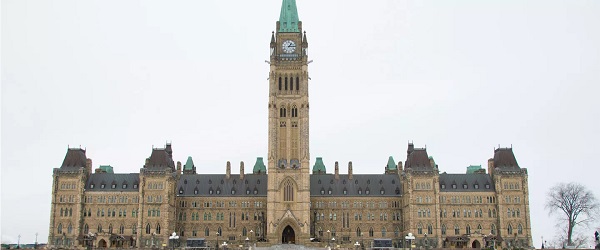Alberta
PANDAMNIT! Alberta cancels festivals & gatherings over 15 people till September

Alberta’s chief medical officer of health Dr. Deeena Hinshaw had some advice Thursday to all Alberta summer festivals, sporting events, leagues and event organizers that have more than 15 people in attendance; if you have not already cancelled your events, you should do so as soon as possible.
“This decision was not made lightly – we must do everything we can to prevent the spread of COVID-19.” Hinshaw said during the daily Alberta press pandemic update, “I know summer festivals and events are incredibly important for many people,” She also advised people to avoid visiting summer homes and any non-essential travel.
 For decades Edmonton has proudly boosted itself as a festival city, so this news puts more pain, hurt and loss on top of so much that has already come since Covid- 19 has swept around the world. “I know this is incredibly disappointing. We all look forward to summer,” Hinshaw continued, “This virus has taken many things from us and this is another loss to absorb.”
For decades Edmonton has proudly boosted itself as a festival city, so this news puts more pain, hurt and loss on top of so much that has already come since Covid- 19 has swept around the world. “I know this is incredibly disappointing. We all look forward to summer,” Hinshaw continued, “This virus has taken many things from us and this is another loss to absorb.”
The province’s officials saw no other choice but to do a blanket ban on summer events and festivals as necessary because of COVID-19’s ability to “spread like wildfire in large groups of people,” Dr. Deena Hinshaw explained.
“To be clear, the orders in place prohibit gatherings of more than 15 people. They also require people gathered in groups of fewer than 15 to maintain a distance of two metres from one another,” Hinshaw explained. “I know summer festivals and events are incredibly important for many people. They provide fun and entertainment in every part of this province, and many people depend on them for livelihood.” Adding, “But we must do everything we can to prevent the spread of COVID-19. We have seen that festivals and large gatherings hold the potential to be super-spreader events.”
“While we are all eager for a relaunch and want to see an easing of restrictions, now is not the time to have people moving through the province and possibly unknowingly spread the virus,” Hinshaw said.
While all events over 15 people are now cancelled until at least September at the earliest, Hinshaw mentioned that there are still activities Albertans can enjoy safely outside, including walks and gardening.
To read more on Todayville click here.
Saskatchewan to start reopening from the coronavirus on May 4 using a 5-point plan

Alberta
Alberta government must do more to avoid red ink

From the Fraser Institute
By Tegan Hill
As Albertans look toward a new year, it’s worth reviewing the state of provincial finances. When delivering news last month of a projected $4.6 billion budget surplus for fiscal year 2024/25, the Smith government simultaneously warned Albertans that a budget deficit could be looming. Confused? A $4.6 billion budget surplus sounds like good news—but not when its on the back of historically high (and incredibly volatile) resource revenue.
In just the last 10 years, resource revenue, which includes oil and gas royalties, has ranged from a low of $3.4 billion in 2015/16 (inflation-adjusted) to a high of $26.1 billion in 2022/23. Inflation-adjusted resource revenue is projected to be relatively high in historical terms this fiscal year at $19.8 billion.
Resource revenue volatility is not in and of itself a problem. The problem is that provincial governments tend to increase spending when resource revenue is high, but do not similarly reduce spending when resource revenue declines.
Overall, in Alberta, a $1 increase in inflation-adjusted per-person resource revenue is associated with an estimated 56-cent increase in program spending the following fiscal year, but a decline in resource revenue is not similarly associated with a reduction in program spending. Over time, this pattern has contributed to historically high levels of government spending that exceed ongoing stable levels of government revenue.
And while the Smith government has shown some restraint, spending levels remain significantly higher than reliable ongoing levels of government revenue. Put simply, unpredictable resource revenue continues to help fund Alberta’s spending—and when resource revenues inevitably fall, Alberta is at high risk of plummeting into a deficit.
Indeed, Finance Minister Nate Horner continues to emphasize that we are “living in extremely volatile times” and warning that if oil prices fall below $70.00 per barrel a budget deficit is “very likely.” According to recent forecasts, the price of oil may hit $66.00 per barrel in 2025.
To avoid this fate, the Alberta government must do more to rein in spending. Fortunately, there’s plenty of options.
For example, the government spends billions in subsidies (a.k.a. corporate welfare) to select industries and businesses every year. A significant body of research shows these subsidies fail to generate widespread economic benefits. Eliminating this corporate welfare, which would generate significant savings in the budget, is a good place to start.
If the Smith government fails to rein in spending, and Alberta incurs a budget deficit, it will only mean more government debt on the backs of Albertans. And with Albertans already paying approximately $650 each in provincial government debt interest each year, that’s something Albertans simply can’t afford.
With a new year set to begin, the Smith government continues to warn of a budget deficit. But rather than simply prepare Albertans for more debt accumulation—financed by their tax dollars—the government should do more to avoid red ink. That means cutting wasteful government spending.

Tegan Hill
Director, Alberta Policy, Fraser Institute
Alberta
Alberta’s Massive Carbon Capture and Storage Network clearing hurdles: Pathways Alliance

From the Canadian Energy Centre
By Will GibsonPipeline front-end engineering and design to be complete by end of year
Canada’s largest oil sands companies continue to advance a major proposed carbon capture and storage (CCS) network in northeast Alberta, including filing regulatory applications, conducting engineering and design, doing environmental surveys and consulting with local communities.
Members of the Pathways Alliance – a group of six companies representing 95 per cent of oil sands production – are also now closer to ordering the steel for their proposed CO2 pipeline.
“We have gone out to potential pipe suppliers and asked them to give us proposals on costs and timing because we do see this as a critical path going forward,” Imperial Oil CEO Brad Corson told analysts on November 1.
He said the next big milestone is for the Pathways companies to reach an agreement with the federal and provincial governments on an economic framework to proceed.
“Once we have the right economic framework in place, then we will be in a position to go order the line pipe that we need for this 400-kilometre pipeline.”
Pathways – which also includes Suncor Energy, Canadian Natural Resources, Cenovus Energy, MEG Energy and ConocoPhillips Canada – is proposing to build the $16.5 billion project to capture emissions from oil sands facilities and transport them to an underground storage hub.
The project was first announced in 2022 but Pathways had not provided recent public updates. The organization had stopped advertising and even briefly shut down its website during the summer in wake of the federal government’s amendments to the Competition Act in June.
Those changes include explicit provisions on the need to produce “adequate and proper testing” to substantiate environmental benefit claims. Critics say the provisions could lead to frivolous lawsuits and could or even scuttle the very projects that Canada is relying on to slash greenhouse gas emissions.
In early December, the Alberta Enterprise Group (AEG) and the Independent Contractors and Businesses Association jointly filed a constitutional challenge against the federal government over the new “greenwashing” rules, which they say unreasonably restrict free speech.
“These regulations pre-emptively ban even truthful, reasonable and defensible discussion unless businesses can meet a government-imposed standard of what is the truth,” said AEG president Catherine Brownlee.
Pathways has since restored its website, and president Kendall Dilling said the organization and its member companies continue working directly with governments and communities along the corridors of the proposed CCS project.
Canadian Natural Resources began filing the regulatory applications to the Alberta Energy Regulator on behalf of Pathways earlier in the year. The company has so far submitted 47 pipeline agreement applications along with conservation and reclamation plans in seeking approvals for the CO2 transportation network.
Pathways has also continued consultation and engagement activities with local communities and Indigenous groups near its pipeline corridors and storage hubs.
“Engagement is ongoing with local communities, Indigenous groups and landowners, as well as a consultation process with Indigenous groups in accordance with Aboriginal Consultation Office requirements,” Dilling says.
An environmental field program that began in 2021 continues to survey the network’s project areas.
“Environmental field studies are ongoing and we are supporting Indigenous groups in completing traditional land use studies,” Dilling says.
“Studies are supported by hundreds of heritage resource assessments, wetland classifications, soil assessments, aquatic habitat evaluations and other environmental activities.”
In addition to working with governments and communities, Pathways expects front-end engineering and design on the proposed 400-kilometre-plus main transportation line and more than 250 kilometres of connecting pipelines to be complete by the end of this year.
Pathways has also drilled two test wells in the proposed storage hub and plans to drill another two or three evaluation wells in the final quarter of 2024.
-

 Health20 hours ago
Health20 hours agoTrump doubles down on using RFK Jr. to study possible link between vaccines and autism
-

 Crime19 hours ago
Crime19 hours agoBiden’s ‘preemptive pardons’ would set ‘dangerous’ precedent, constitutional scholar warns
-

 International2 days ago
International2 days agoBombshell report shows FBI had ‘informants’ in Washington, DC on January 6
-

 Business21 hours ago
Business21 hours agoCanada needs to get serious about securing its border
-

 Business24 hours ago
Business24 hours agoOut-Trumping Trump: A Mission Without a Win
-

 Business2 days ago
Business2 days agoFor the record—former finance minister did not keep Canada’s ‘fiscal powder dry’
-

 Business22 hours ago
Business22 hours agoCanadians face massive uncertainly and turbulence in 2025
-

 armed forces2 days ago
armed forces2 days agoCanadian military deployed ‘gender advisors’ to Ukraine, Haiti at taxpayers’ expense






